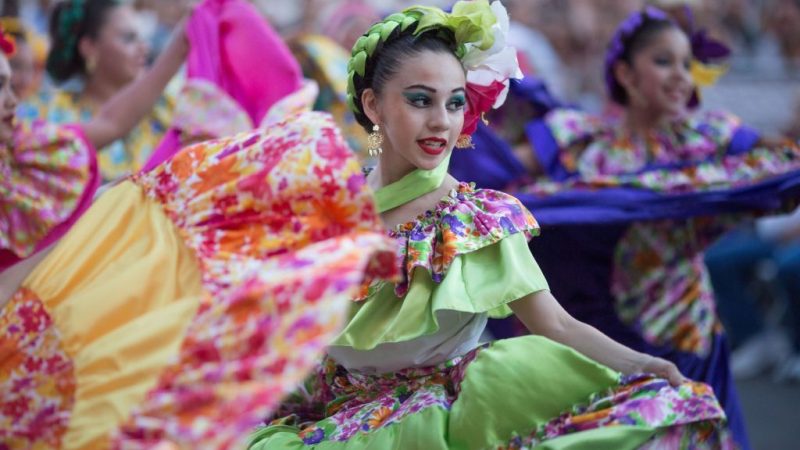What is Cinco de Mayo? Cinco de Mayo, celebrated on the 5th of May, is a significant day that carries both historical weight and cultural significance. Often misunderstood and misrepresented, it has become a widely recognized holiday, especially in the United States. This article explores 10 fascinating insights into the famous Mexican tradition, shedding light on its true meaning, historical context, and cultural impact.
What is Cinco de Mayo? The Battle of Puebla
Cinco de Mayo commemorates the Mexican victory at the Battle of Puebla on May 5, 1862. The battle saw a much smaller Mexican force under General Ignacio Zaragoza defeat a significantly larger and better-equipped French army. This unexpected triumph became a symbol of Mexican resistance and unity against foreign aggression.
What is Cinco de Mayo? Not Mexican Independence Day
A common misconception is that Cinco de Mayo marks Mexico’s Independence Day, which is actually celebrated on September 16. Instead, Cinco de Mayo recognizes a pivotal battle in Mexico’s resistance against French occupation during the Second French Intervention in Mexico. The Battle of Puebla was a morale-boosting event, but it did not mark the end of French presence in Mexico.
What is Cinco de Mayo? A Symbol of Mexican Resilience
Despite the eventual French occupation and establishment of Maximilian I as Emperor of Mexico, the Battle of Puebla remains a symbol of Mexican resilience and determination. It represents the enduring spirit of the Mexican people in the face of overwhelming odds, inspiring generations to come.
What is Cinco de Mayo? A Global Celebration
While the Battle of Puebla is a significant event in Mexican history, Cinco de Mayo is more widely celebrated in the United States than in Mexico. In the U.S., the day has become a festive occasion, with parades, music, food, and drinks, especially in areas with large Mexican-American communities. This transformation into a broader cultural celebration has raised questions about cultural appropriation and commercialization.
What is Cinco de Mayo? The Role of Mexican-Americans
Mexican-Americans played a key role in elevating Cinco de Mayo in the United States. During the Chicano Movement of the 1960s and 1970s, Mexican-Americans embraced the holiday as a symbol of cultural pride and resistance. It became a way to honor Mexican heritage and promote social justice, contributing to its popularity in the U.S.
What is Cinco de Mayo? Cultural Significance in Mexico
In Mexico, Cinco de Mayo is primarily celebrated in the state of Puebla, where the battle took place. Festivities include reenactments, parades, and educational events. However, it is not a federal holiday, and many Mexicans view it as a regional event rather than a national celebration. The emphasis on regional history makes it distinct from other Mexican holidays.
What is Cinco de Mayo? Commercialization and Misconceptions
The commercialization of Cinco de Mayo in the United States has led to misconceptions about the holiday. Many see it as an excuse for partying, often with stereotypes like sombreros, tequila, and mariachi music. This commercialization has drawn criticism for diluting the historical significance and promoting cultural stereotypes.
What is Cinco de Mayo? Educating and Raising Awareness
Efforts to reclaim the true meaning of Cinco de Mayo are underway. Educational initiatives aim to teach the historical context and cultural significance, emphasizing the Battle of Puebla’s importance. These efforts are critical to combatting the commercialization and ensuring that Cinco de Mayo is celebrated with respect and understanding.
What is Cinco de Mayo? Impact on Cross-Cultural Understanding
Cinco de Mayo serves as an opportunity to foster cross-cultural understanding. By exploring its historical roots and significance, people can appreciate the Mexican-American experience and the broader Mexican heritage. It encourages dialogue about cultural identity and the need to respect and honor traditions from different backgrounds.
What is Cinco de Mayo? The Future of the Celebration
The future of Cinco de Mayo depends on balancing celebration and respect for its origins. Efforts to educate and raise awareness are crucial to ensure that the holiday remains meaningful. As the Mexican-American community continues to grow and evolve, the celebration may adapt, emphasizing the importance of cultural heritage and unity.
Conclusion
What is Cinco de Mayo? Cinco de Mayo, often misunderstood and misrepresented, is a day with profound historical and cultural significance. It commemorates a pivotal battle in Mexican history and has become a symbol of resistance and resilience. While its celebration in the United States has shifted towards commercialization, efforts to reclaim its true meaning are gaining momentum. By understanding the 10 fascinating insights into this famous Mexican tradition, we can appreciate its importance and celebrate it with respect.
FAQs
Q1. What is Cinco de Mayo?
Cinco de Mayo is a holiday celebrated on May 5th, commemorating the Mexican victory at the Battle of Puebla against the French in 1862.
Q2. What is the difference between Cinco de Mayo and Mexican Independence Day?
Cinco de Mayo celebrates the Battle of Puebla, while Mexican Independence Day, on September 16, marks the beginning of Mexico’s struggle for independence from Spain in 1810.
Q3. Why is Cinco de Mayo more popular in the United States than in Mexico?
Cinco de Mayo became popular in the U.S. due to the Mexican-American community’s embrace of the holiday as a symbol of cultural pride during the Chicano Movement, whereas in Mexico, it’s primarily celebrated in Puebla.
Q4. What are common misconceptions about Cinco de Mayo?
Common misconceptions include thinking it’s Mexican Independence Day, and the commercialization of the holiday often promotes stereotypes and dilutes its historical significance.
Q5. How can we celebrate Cinco de Mayo respectfully?
To celebrate respectfully, focus on understanding the historical context, support Mexican-American culture and businesses, and avoid reinforcing stereotypes. Engaging in educational events and cultural activities can help maintain the holiday’s true spirit.
Also read: INDOOR SOFT PLAY EQUIPMENT FOR HOME: CREATE ULTIMATE FUN WITH 10 ESSENTIAL PICKS









